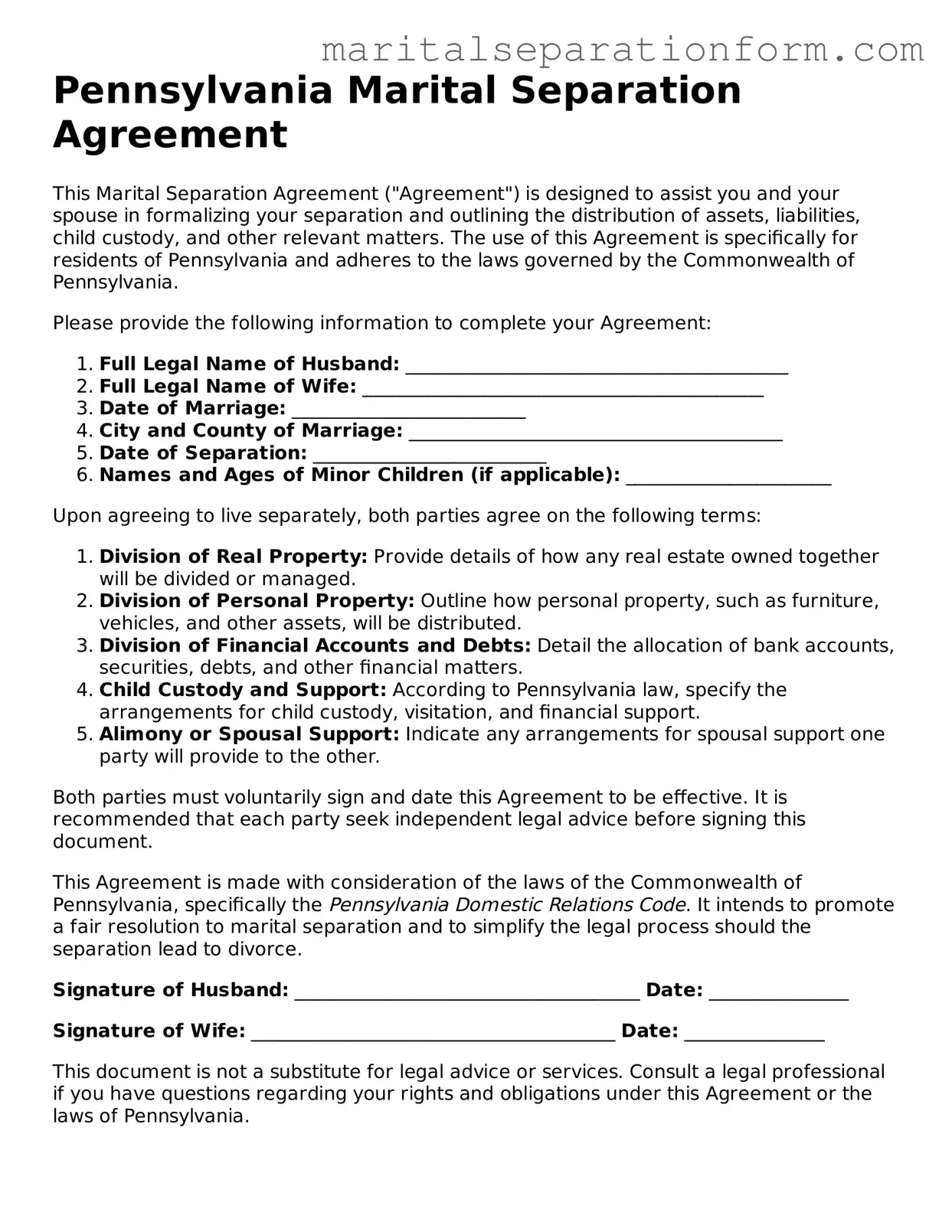Pennsylvania Marital Separation Agreement
This Marital Separation Agreement ("Agreement") is designed to assist you and your spouse in formalizing your separation and outlining the distribution of assets, liabilities, child custody, and other relevant matters. The use of this Agreement is specifically for residents of Pennsylvania and adheres to the laws governed by the Commonwealth of Pennsylvania.
Please provide the following information to complete your Agreement:
- Full Legal Name of Husband: _________________________________________
- Full Legal Name of Wife: ___________________________________________
- Date of Marriage: _________________________
- City and County of Marriage: ________________________________________
- Date of Separation: _________________________
- Names and Ages of Minor Children (if applicable): ______________________
Upon agreeing to live separately, both parties agree on the following terms:
- Division of Real Property: Provide details of how any real estate owned together will be divided or managed.
- Division of Personal Property: Outline how personal property, such as furniture, vehicles, and other assets, will be distributed.
- Division of Financial Accounts and Debts: Detail the allocation of bank accounts, securities, debts, and other financial matters.
- Child Custody and Support: According to Pennsylvania law, specify the arrangements for child custody, visitation, and financial support.
- Alimony or Spousal Support: Indicate any arrangements for spousal support one party will provide to the other.
Both parties must voluntarily sign and date this Agreement to be effective. It is recommended that each party seek independent legal advice before signing this document.
This Agreement is made with consideration of the laws of the Commonwealth of Pennsylvania, specifically the Pennsylvania Domestic Relations Code. It intends to promote a fair resolution to marital separation and to simplify the legal process should the separation lead to divorce.
Signature of Husband: _____________________________________ Date: _______________
Signature of Wife: _______________________________________ Date: _______________
This document is not a substitute for legal advice or services. Consult a legal professional if you have questions regarding your rights and obligations under this Agreement or the laws of Pennsylvania.
